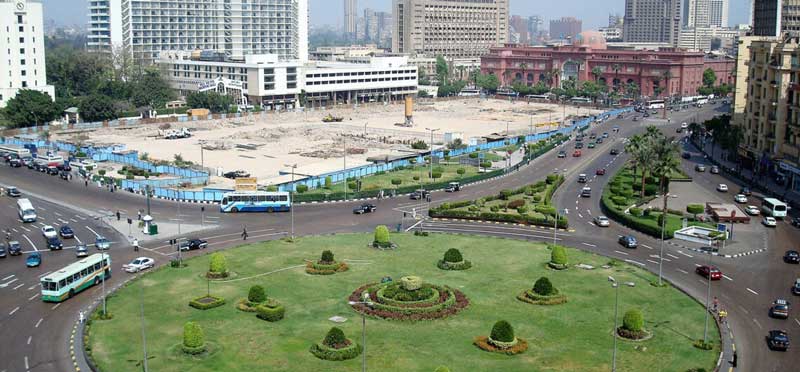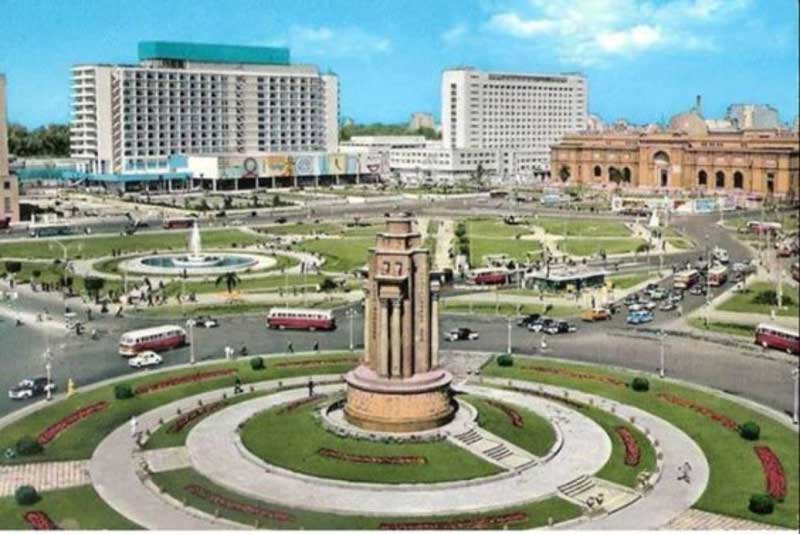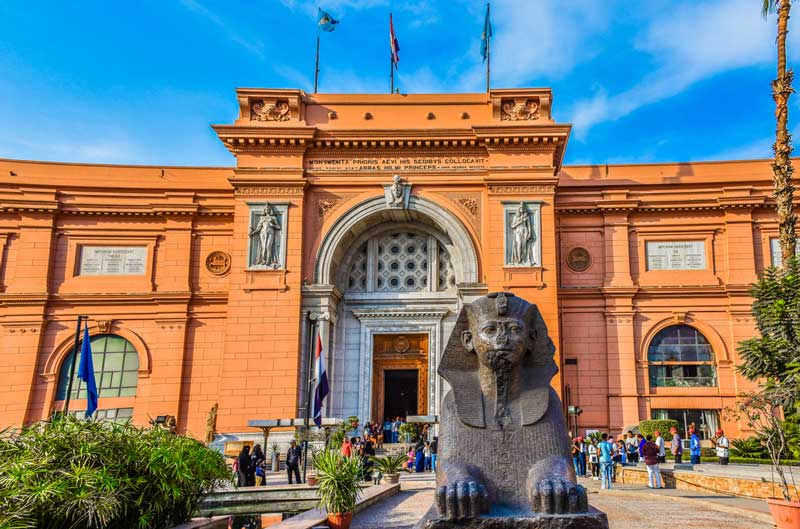
Located near the Nile River in downtown Cairo, Tahrir Square, meaning Liberation Square, is a major public square, which has been the location and focus for political demonstrations in the city since the early 20th century. Reckoned one of the world's most iconic and well-known squares, it was originally built in the early 19th century, designed to be a grand public space befitting the new capital city of Cairo and was originally known as Ismailia Square, named after the 19th-century Khedive or ruler Ismail Pasha. Subsequently, the name was officially changed in 1952, following the Egyptian Revolution, which changed Egypt from a constitutional monarchy to a republic. Also known as Martyr Square, it symbolises the Egyptian people's struggle for democracy and freedom and is a place where they assemble to voice their grievances and demand change.

One week after the assassination of President Anwar Sadat, the third President of Egypt, during the annual victory parade on 6th October 1981, the square was renamed Anwar El Sadat Square on 13 October 1981 and it was also decided to install his statue in the square. However, the new official name never became a popular usage and the statue was never installed. The pedestal for the proposed statue, which was erected by King Farouk, was subsequently removed in 1987 during the construction of the underground Sadat Metro Station. The square was a focal point for the Egyptian Revolution of 2011, also known as the 25 January Revolution, as a protest against increasing Police brutality and unwarranted use of force by the authority, which ultimately led to the overthrow of the democratically elected President of Egypt Mohamed Morsi from power and suspended the Egyptian constitution of 2012.

The bare and barren Tahrir Square got a new look in 2020, when the government erected a new monument at its centre featuring an ancient obelisk, a tall, four-sided, narrow tapering monument that ends in a pyramid-like shape at the top, along with four ram-headed Sphinx statues. While the obelisk from the reign of Ramses II was unearthed at Tanis in 2019, the sphinx statues were moved from Karnak. However, the installation was criticised by a section of people who alleged that it was purposely installed by the government to curb public assembling in the square to tighten state control over the popular public space and obscure the memory of the historic Egyptian Revolution of 2011.

Unlike the other popular city squares, Tahrir Square is devoid of vendors, stalls and small shops and is rather dominated by an extremely busy traffic circle, around which several lanes of traffic pass all through the day. However, the underground access of the Sadat Metro Station provides the safest way for pedestrians to cross the broad roads of the heavily trafficked square. The plaza on the northeastern side of the square is adorned with a statue of nationalist leader Umar Makram, installed to commemorate his resistance against Napoleon I's invasion of Egypt in 1798. The big Omar Makram Mosque, named after him, is also located in the vicinity.

There are several noteworthy buildings in the area around Tahrir Square, which include the building of the Egyptian Museum. Designed by the reputed French architect Marcel Dourgnon, it houses the history of Egyptian civilization, along with the world’s oldest collection of Pharaonic and Greco-Roman antiquities. Constructed in 1949, the 14 storey Mogamma el Tahrir or the Complex of Liberation, located to the south of Tahrir Square, is an administrative governmental building, which houses, among others the Tax Evasion Investigations Offices, the Fire Fighting Organization and the Passport Offices. The Headquarters of the Arab League, which is also located in the square area, has witnessed the foundation of the Arab League and is currently used for the Arab temporary parliamentary sessions. The other important buildings in the area include the Kasr El Dobara Evangelical Church, the Folklore Arts House, the Nile Hotel and the original downtown campus of the American University in Cairo. However, even though Tahrir Square is known as the heart of the Egyptian Revolution, it does not play any significant role in tourism. But despite its charmless boring character, many tourists make it a point of visiting the area simply because of its role in shaping the political landscape of the country on several occasions.
